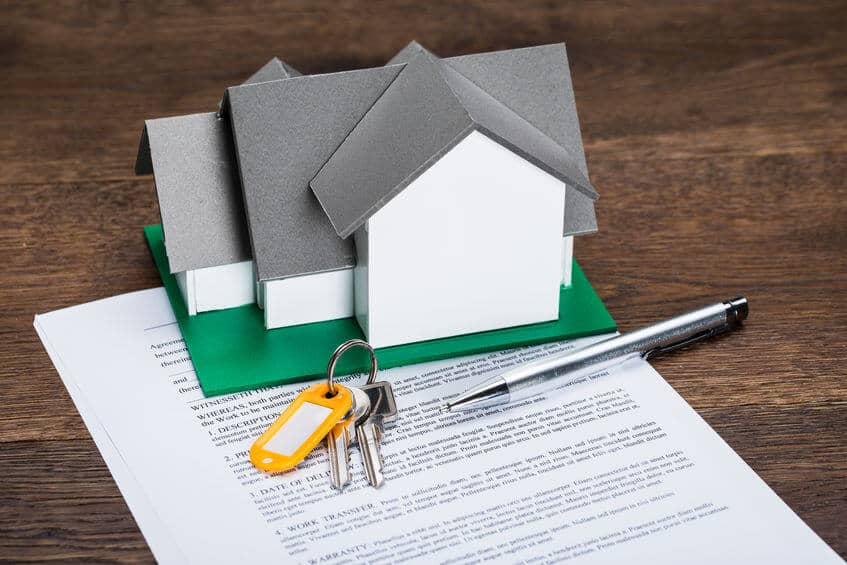Construction on affordable housing has continued through the pandemic, but the biggest impacts may be yet to come

One of those exceptions? Publicly financed low-income housing.
“We were able to get people off the streets and into housing,” says Jonathan Mallahan, director of housing for Catholic Charities. “Any project in current construction, we were fortunate we were able to complete and we weren’t terribly impacted.”
That’s been true for other affordable housing projects as well. Spokane Housing Ventures says it’s ahead of schedule on Jayne Auld Manor, a 48-unit affordable housing project that should be ready by September. Hope House 2.0, a Volunteers of America project, will feature shelter space and low-income units, and it’s on track to finish by April 2021.
Fawn Schott, CEO for Volunteers of America Eastern Washington & Northern Idaho, says the fact that the state made an exception for affordable housing was crucial.
The real challenges, however, lie ahead. Local housing providers say they’re concerned that there will be a spike in demand for low-income housing when the state eviction moratorium is lifted. And they’re not sure they can keep up.
“The pain that renters are feeling right now… is my biggest concern, and making sure people don’t lose their housing, which has all sorts of other impacts on wellness,” Mallahan says. “Keeping people housed through this, and sustainably housed, is crucial.”
Currently, there are significant barriers for affordable housing projects with significant demand for them. But that was true even before the pandemic.
Greenstone Homes, for instance, is assisting Habitat for Humanity and Community Frameworks in developing a 20-acre parcel in Airway Heights, with the goal of providing alternative affordable housing for families located in mobile home parks in the Fairchild Air Force Base crash zone. Jim Frank, CEO of Greenstone Homes, says they’ve encountered a series of obstacles in getting it done. The land needed to be rezoned, for instance, and they needed permission to build smaller homes on the lots.
None of that had to do with the pandemic. But now, even though construction is allowed for low-income projects, these projects can still be indirectly impacted. If contractors can only work on affordable housing, it may not be enough for them to work.
“The pandemic didn’t affect the previous two or three years,” Frank says. “If I were to do it today, the pandemic just makes it worse, because the whole construction environment is far more difficult to deal with now. We’re losing a lot of subcontractors who have not been able to operate in this environment.”
Mallahan says future Catholic Charities projects could be impacted in the long term. Many of their low-income housing projects are tax credit properties, in which Catholic Charities sells tax credits from the state to banks for equity. But when corporations start losing money, the value of those tax credits goes down.
“That can continue to impact us down the road,” he says.
Yet, already, people are in line to find affordable homes. John Hancock, executive director of Spokane Housing Ventures, says it can take years for someone to get through the waiting list for an apartment.
“We have apartment buildings with 20 people in line for one vacancy. The waiting list we have stretches for years and years and years and years,” Hancock says. “The tragedy is it’s hard to rebuild a life if you’re sleeping on a couch, or on grandma’s back porch, or in your car.”
Arielle Anderson, homeless services manager for Spokane Neighborhood Action Partners (SNAP), says she’s concerned that when the eviction moratorium is lifted, there might be a huge influx in people losing homes. Already, SNAP is seeing an increase in rental assistance requests. She adds that rent in recent years has skyrocketed to the point that those on a lower fixed income can’t afford a place.
“So, yes, I am absolutely concerned about the lack of affordable housing,” she says, “and for those who are the most vulnerable and are on extremely tight budgets.”
Schott adds that they’ve seen an increase in services at the shelters they operate as well, highlighting the need for more housing. While construction on current projects could continue, she says there will likely be more obstacles in beginning new projects due to the economy taking a turn.
For one, if the state has to slash the budget, social services might be the first place to start. And fundraising overall will be a challenge when people have less money in their pockets.
“The demand for our services goes up, even though the ability to fundraise goes down,” Schott says.
Housing providers say elected leaders can help prevent a major influx in evictions when the state lifts the moratorium. But they may have to use some of the $90 million Spokane County received from the CARES Act, passed by Congress in March.
Ami Manning, director of housing services for Transitions, a nonprofit that works to end poverty and homelessness, says some of that money should go toward rental assistance, but she’s concerned by reports that the Spokane County Commission may spend some of it on jail capacity.
“When that eviction moratorium is up, we have to have a plan for that and we have to have a way to not have a larger population of homeless people because our system can’t handle it,” Manning says.
How much money would it take to help with rental assistance? Mallahan says it’s “going to be a massive number” — $10 million would be a good start.
Those decisions haven’t been made yet. But he says he’s hopeful some relief in rental assistance can at least decrease the demand for affordable housing in the future.
“It’s the right thing to do,” Mallahan says.
Source: inlander.com















 Accessibility
Accessibility